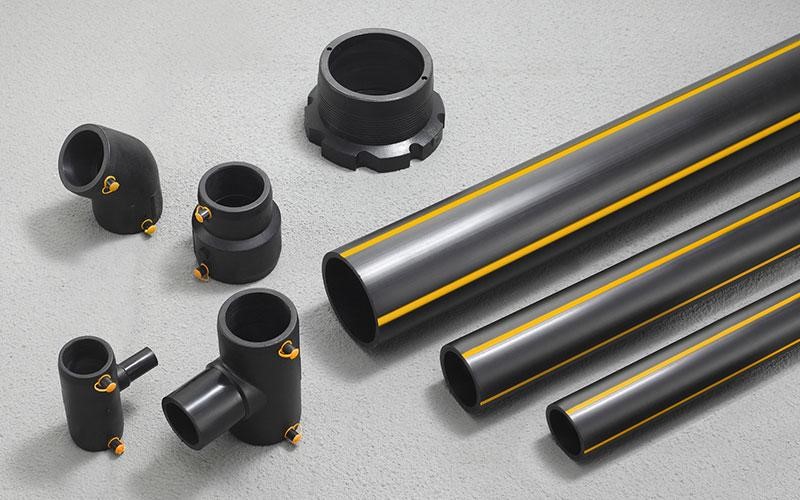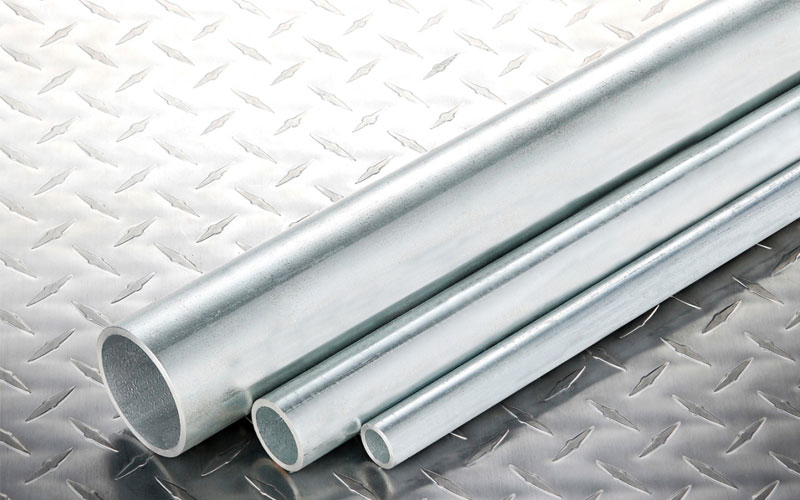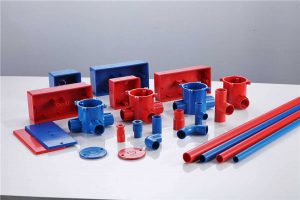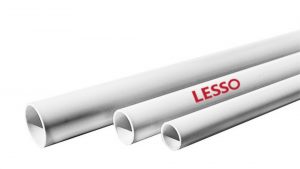Table of Contents
At LESSO, we specialize in premium aluminium-plastic and PE gas transmission pipes. Before installing gas pipes, you must choose a specific material, of which there are many to select from. Along with the difficulties of installing new gas pipes, you must also contend with the importance of buying the right gas pipes for the project at hand.
When you’re searching for the ideal gas pipes, you’ll need to purchase durable options and make sure they maintain good gas pressure once installed. If you select a material that doesn’t support the application, you could create a dangerous situation.
Whether you need to install gas pipes below or above ground, it’s important to identify what your project needs before you purchase the materials you’re set to use. In this guide, you’ll discover what type of pipe is used for natural gas lines.
Common Materials Used
There are many different materials used in the making of gas plumbing, which include everything from black iron to PVC. The material you use depends on the specific project you’re working on and its parameters.
Black Iron
Black iron is a highly common gas pipe material that offers many clear advantages. For example, this type of material offers a considerable amount of heat resistance and durability. It also creates an airtight seal when properly installed. The main issue with this material is that the seal will deteriorate over time.
There’s also a chance that the piping material will corrode. Black iron pipes need to be maintained on a regular basis to avoid costly issues. Keep in mind that the material is also less flexible than others, which means that it will require additional joints during the installation process to keep leaks at bay.


PE Gas Pipe
Polyethylene gas pipes are durable pipes that offer high resistance and are environmentally friendly. These pipes are ideal for underground applications. Unlike black iron pipes, PE ones don’t require regular maintenance. This type of material is similar to what you’d find with a PVC gas pipe. A PVC gas line is also made from synthetic plastic materials.
Aluminium-plastic Composite Pipe


The aluminum-plastic composite pipe consists of two layers, which include a white plastic layer on the outside and an aluminum layer beneath that acts as an inner lining. Since this gas pipe consists of metal and plastic materials, you can’t connect multiple pipes with a hot melting technique. Instead, they’ll need to be mechanically connected.


Hot Dip Galvanized Steel Pipe
A hot dip galvanized steel pipe offers ample durability and high energy efficiency. These pipes can be used for exterior and interior gas lines. It’s typical to find galvanized steel pipes in older homes. While standard galvanized pipes come with a labor-intensive installation process, the hot dip variety significantly improves installation requirements.
Analyzing PE Gas Pipe for Natural Gas Lines
Over the past few decades, PE gas pipes have proven to be exceedingly effective at delivering gas to homes, businesses, and other locations. To understand how beneficial a PE gas pipe can be, imagine having the durability of a steel pipe but the lightness and flexibility of a less rigid material.
Polyethylene pipes have high durability, flexibility, and resistance characteristics. This type of pipe is resistant to weathering, cracking, and corrosion. It’s also rugged and can withstand adverse conditions. It’s possible for these pipes to last for more than 100 years before needing to be replaced.
PE pipes are also relatively affordable. The costs associated with manufacturing and installing PE pipes are lower than what you get with other materials. Because this material is man-made, it has some unique properties that aren’t widely available. For example, these pipes offer high resistance to electrochemical corrosion.
If you’re using PE pipes with large projects that require numerous interconnecting segments, you can join them together with heat fusion or different mechanical methods. Because of how PE pipes are designed, it takes a lot for cracks to develop in the material.
While there are many unique advantages associated with PE gas pipes, there are also a couple of downsides. For example, this pipe isn’t resistant to ketones, chlorinated hydrocarbons, or oxidizing acids, which means that it could begin to deteriorate depending on where it’s installed.
Delving into Aluminium-plastic Composite Pipes
Aluminum-plastic composite pipes are also highly effective when used in natural gas lines. Since this type of pipe uses two distinct materials, it’s possible to arrange the aluminum and plastic in any way you see fit, which means that you can use the pipes for a wide range of applications. Connecting these pipes is also simple and straightforward. Mechanical locks are used in this process. Once you cut two pipes to the necessary size, you can connect them with a simple lock.
You should also consider these pipes because of their low cost. Aluminum and plastic are two of the most affordable materials that can be made into pipes, which makes them viable for large-scale projects. Despite the affordability of these materials, this type of piping has a very long service life.
The main issue with using aluminum-plastic composite pipes is that they don’t have a great appearance. Since these pipes are flexible, it’s challenging to obtain a vertical or horizontal aesthetic after you install them. Even when these pipes are placed vertically, there will be a small curvature.
Since composite pipes use a mechanical lock for the connection, it’s possible for them to start experiencing wear and tear if too much pressure is placed on them. However, this issue is more apparent when water is running through the pipes. These pipes are regularly used to deliver gas to residential homes.
Exploring Hot Dip Galvanized Steel Pipe
Hot dip galvanized steel pipes are among the most durable ones around. They’re also highly corrosion-resistant and energy-efficient. The main issue with using these pipes for gas-based applications is that galvanized steel pipes are considerably more expensive in comparison to the alternatives. However, the higher costs are mainly caused by a more labor-intensive installation process.
Galvanized steel pipes are becoming increasingly popular for gas-based applications because of their resiliency in comparison to traditional steel. When you leave steel outside continuously, it will eventually start to corrode, which could lead to irreversible damage.
The galvanization process adds a thin layer of zinc to the steel surface, which prevents rusting. Galvanization gets rid of the one weakness that comes with using steel for pipes. As for the hot dip process, it ensures that the most premium steel is combined with the galvanized coating. The main benefits of using galvanized steel include:
- High durability
- Ample corrosion resistance
- Strong finishing
- Longevity
- Scratch resistance
The main downside to using galvanized steel for gas pipes is the high cost.
Comparison and Expert Recommendations
When your project requires the installation of natural gas lines, it’s important that you select the right material for the job. Each material in this guide has its own set of pros and cons, which you should compare to determine which material you should select. Your best option would be to choose aluminum-plastic composite, galvanized steel, or PE pipes.
While black iron has its benefits, there are many downsides that you would do best to avoid. If longevity is a primary concern of yours, consider opting for PE or galvanized steel pipes. On the other hand, aluminum-plastic composite pipes are ideal when you want the most affordable solution.
Conclusion
Since gas can cause high amounts of pressure during transport, it’s crucial that you select the appropriate material. The right material will provide you with long-lasting and durable pipes. Here at LESSO, we provide many high-quality gas transmission pipes that accommodate every application. Contact us today to learn more.
FAQs about Sewer Pipe
Always consult a licensed professional for any work involving natural gas lines. Never attempt to repair or modify gas lines yourself.
While it’s technically possible, mixing different schedules in a single system is generally not recommended due to differences in wall thickness and pressure ratings. Always consult with a professional to ensure compatibility.
Recommend Reading


CPVC vs PVC Pipes: What’s the Difference?
Table of Contents One of the most important and often overlooked features of any home is the plastic piping used to carry water, heat, and


The Lifespan of PVC Pipes: What You Need to Know
Table of Contents Why are PVC pipes so popular? PVC pipes are largely used because of their strength, durability, and corrosive-resistant features. This makes them








